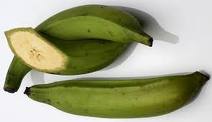Asarabacca is a member of the Aristolochiaceae family and is native to Europe being naturalized in the British Isles . It has also been called ‘wild nard’; Pliny wrote about it as nardum rusticum or country nard. (This is not to be confused with Indian spikenard or jatamansi.) The name asarabacca comes from the Greek ασαρον and βακχάρις, (spicy) and the root was a source of perfume βακάρις although as it has a camphor smell it would seem that tastes in perfume have changed since those times. (Who would want to smell of mothballs and ginger?)The plant has a mildly peppery and ginger smell, and was also used in medicinal drinks in ancient Greece
Today it is mainly used in homeopathy to treat anxiety and excitability. However at one time it was widely used, especially in the Middle Ages. Hildegard of Bingen (1098 – 1179) sometimes described as the German Mother of Botany, mentions it in her two medical books (“Physica” and “Causea et Curae”), which she wrote between 1151 and 1161, and judging by the number of copies of these manuscripts still in existence, they were widely read.
She recommended asarabacca to be used in a bathing regime for skin eruptions due to lust or (sexual) incontinence with agrimony Agrimonia eupatoria, hyssop Hyssopus officinalis, asarum Asarum europaeum and menstrual blood added to a bath.
“There are three kinds of lung disease; — simple pneumonia, white pneumonia (bronchitis) and black pneumonia, (phthysis) which is marked by pain below the mamma, under the armpit, and in the top of the
shoulders, with (hectic) redness of the cheeks. And thus are they treated. Let (the patient) take, for three successive days, of the following herbs; hemlock, agrimony, herb Robert, and asarabacca, then let him
undergo a three day's course of aperients. When the disease is thus removed from the bronchial tubes, an emetic should be given him (daily) to the end of nine days.”
Actually asarabacca is a purgative and a fairly violent one at that, and as it contains toxins, should not be used. The information here is for interest’s sake only. It has also been used for bronchitis, but gained a lot of attention as it was used in snuff to provoke sneezing and to clear the nasal passages. It has been used for silicosis and as an expectorant as well as to promote sweating during fevers.
 The British herbalist Culpeper writing in the 17th century says that it is a purgative and if boiled in whey will remove “obstructions of the liver and spleen,” and suggested that it was good for jaundice and other liver complaints. If steeped in urine he believed it was good for fever and said that its volatile oil obtained from the roots when mixed with laudanum (opium) was an antidote to snake bites.
The British herbalist Culpeper writing in the 17th century says that it is a purgative and if boiled in whey will remove “obstructions of the liver and spleen,” and suggested that it was good for jaundice and other liver complaints. If steeped in urine he believed it was good for fever and said that its volatile oil obtained from the roots when mixed with laudanum (opium) was an antidote to snake bites. He also wrote that the “leaves and root being boiled in lye and the head often washed therewith whilst it is warm, comforteth the head and brain that is ill affected by taking a cold and helpeth the memory.”
 The American cousin of asarabacca is Asarum canadensis which is known as wild ginger. It has different properties to the European plant, so don’t confuse it. The European asarabacca is a small plant rather like the Lesser celandine in height, but it has browny-purple flowers, which remind me of the Water Avens, (Geum rivale) which is also known as Indian Chocolate. It is a protected species in
The American cousin of asarabacca is Asarum canadensis which is known as wild ginger. It has different properties to the European plant, so don’t confuse it. The European asarabacca is a small plant rather like the Lesser celandine in height, but it has browny-purple flowers, which remind me of the Water Avens, (Geum rivale) which is also known as Indian Chocolate. It is a protected species in In traditional medicine systems in Europe and other parts of the world this little plant has been used as a remedy for asthma, angina, coughs, migraines, dehydration and to induce vomiting, as well as the ailments already mentioned above.
 It contains toxins which are neutralized by the drying process, although β-asarone, one of its constituents is thought to be carcinogenic. The volatile oil from the roots is made up of 50% of toxic phenyl-propane asarone with mono and sesquiterpenoids. The old herbalists were aware of the dangers in plants and warned of them as well as extolling a plant’s virtues.
It contains toxins which are neutralized by the drying process, although β-asarone, one of its constituents is thought to be carcinogenic. The volatile oil from the roots is made up of 50% of toxic phenyl-propane asarone with mono and sesquiterpenoids. The old herbalists were aware of the dangers in plants and warned of them as well as extolling a plant’s virtues. This plant has gone out of fashion in herbal remedies, perhaps because there are so many others we know are safer to use, and because it is an endangered species.















































